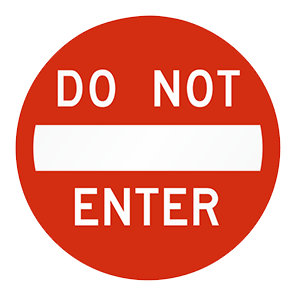2025 Nevada Permit Test 19
The following questions are from real DMV written tests. These are some of the actual permit questions you will face in Nevada. Each permit practice test question has three answer choices. Select one answer for each question and select "grade this section." You can find this button at the bottom of the drivers license quiz. For a complete list of questions and answers for Nevada please visit https://cheat-sheets.dmv-written-test.com/en/nevada/car.
Number of Tests
Number of Question
Passing Score
8. Before turning, you should:
Explanation
To complete a turn safely, you should activate your turn signal three to four seconds before your turn.
9. This road sign means:

Explanation
If you drive past these signs, you are going the wrong way and are at risk of a head-on collision. You should cautiously turn around.
10. Allowing a space cushion between your vehicle and its surroundings is important because it:
Explanation
The only way to be sure you will have enough time to react to mistakes made by other drivers is to leave plenty of space between you and the vehicles around you.
11. If you stop at a railroad crossing with more than one track:
Explanation
If you are stopped at a railroad crossing with more than one track, do not start moving as soon as a train passes. Wait until you have a clear view down all tracks before you start across. Even where there is only one track, do not start across immediately after a train passes; check again for another train that may be approaching.
12. Signs that are colored orange are:
Explanation
Highway work zones are established according to the type of work underway along the roadway. Signs in work areas are typically diamond-shaped, orange, have black letters or symbols, and serve as a warning that people are working on or near the highway.
13. On a freeway, you realize you missed your turn or exit. You should:
Explanation
If you miss your turn or exit, do not back up, but go on to the next turn or exit where you can safely turn around. It is illegal to back up on a shoulder or a freeway.
14. Which of the following does not happen after drinking?
Explanation




